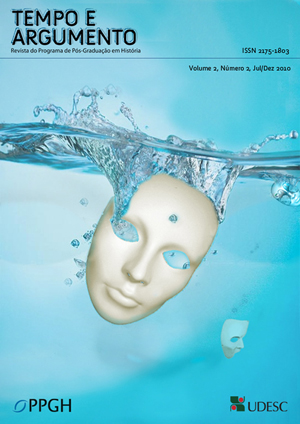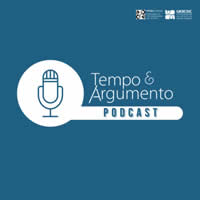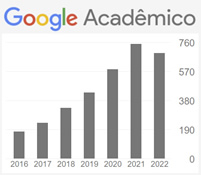Back to Goiás and Minas Gerais: returnees, geographical Imaginations and its discontents
DOI:
https://doi.org/10.5965/2175180302022010121Keywords:
Brazilian immigration, return migration, Brazil, transnationalism, cultural geography, ethnic geographyAbstract
Migration processes to the United States are just as much about those migrants who leave Brazil as it is about those who remain, and also about those who return to Brazil (i.e.; returnees). Brazilian immigration to the United States is a relatively recent phenomenon that gained momentum in the 1980s in unprecedented numbers. How are these Portuguese-speaking Brazilian immigrants shaping and (re)creating new places and spaces, and what happens upon their eventual return to Brazil? How are migrant returnees experiencing changes in their livelihoods in two sending communities in Brazil, after living in two receiving communities in the United States? Using multiple methods and selected extracts from 273 in-depth and informal interviews, this paper addresses these questions by evaluating the changes incurred by migration. Brazilians (re)create transnational places and spaces through social, cultural, and economic practices, within receiving communities, but they also incorporate and add new elements to their livelihoods in sending communities of Piracanjuba, in the state of Goiás, and Governador Valadares, in the state of Minas Gerais, in Brazil. Brazilian migration processes have both positive and negative ramifications. However, the migration process is experienced differently by men and women. Men tend to experience an emasculation of sorts and are happier in Brazil, while women tend to indicate higher happiness levels in the United States.
Downloads
References
ALMEIDA, Z. M. DE. 2003. Fazer a América: Inserção e Mobilidade do Imigrante Brasileiro em uma Economia de Base Étnica. Minas Gerais, Brazil: Unileste Edições.
AMERICAN COMMUNITIY SURVEY, U.S. CENSUS BUREAU 2007. S0201. Selected Population Profile in the United States, Country of Birth: Brazil; Data Set: 2007:http://factfinder.census.gov/servlet/IPTable?_bm=y&- reg=ACS_2007_1YR_G00_S0201:733;ACS_2007_1YR_G00_S0201PR:733;ACS_2007_1YR_G00_S0201T:733;ACS_2007_1YR_G00_S0201TPR:733&-qr_name=ACS_2007_1YR_G00_S0201&-qr_name=ACS_2007_1YR_G00_S0201PR&-qr_name=ACS_2007_1YR_G00_S0201T&-qr_name=ACS_2007_1YR_G00_S0201TPR&-ds_name=ACS_2007_1YR_G00_&-TABLE_NAMEX=&-ci_type=B&-redoLog=false&-geo_id=01000US&-format=&-_lang=en
BASCH, L., N. G. SCHILLER, AND C. S. BLANC. 1995. From Immigrant to Transmigrant: Theorizing Transnational Migration, Anthropological Quartely 6(1): 48-63.
BESERRA, B. 2003. Brazilian Immigrants in the United States: Cultural Imperialism and Social Class. New York: LFB Scholarly Publishing LLC.
BERRY, K. A. AND M. L. HENDERSON (EDS.) 2002. Geographical Identities of Ethnic America. Reno, Nevada: University of Nevada Press.
BRAZILIAN MINISTRY OF FOREIGN RELATIONS 2002. Ministerio de Relações Exteriores. [www.mre.gov.br/portugues/questoes/dowload/rcn2002.xls]
BRETTELL, CAROLYN B. AND JAMES F. HOLLIFIELD (EDS). 1999. Migration Theory: Talking Across Disciplines. New York: Routledge.
BRETTELL, C. B. 1999. Theorizing Migration in Anthropology. The Social Construction of Networks, Identities, Communities, and Globalscapes. In Migration Theory: Talking Across Disciplines, edited by C. B. Brettel andJ. F. Hollifield, 109-135. New York: Routledge.
CASTLES, S., AND M. J. MILLER 2003. The Age of Migration. Third Edition. New York: The Guildford Press.
DA MATTA, R. 1985. A Casa e a Rua. Rio de Janeiro Brazil: Editora Brasiliense.
FALCONI, J. L.. AND J. A. MAZZOTI (Eds.) 2007. The Other Latinos.Harvard University David Rockefeller Center for Latin American Studies. Cambridge, Massachusetts: Harvard University Press.
FRAZIER, J. W. AND E. L. TETTY-FIO (Eds) 2006. Race, Ethnicity, and Place in a Changing America. Harpur College, New York, State University of New York at Binghamton: Global Academic Publishing.
GOZA, F. 1999. Brazilian Immigration to Ontario, International Migration, 37(4): 765-799.
KAPLAN, D. H. AND W. LI (Eds). 2006. Landscapes of the Ethnic Economy.Lanham, Maryland: Rowman and Littlefield Publishers.
LEVITT, P. 2001. The Transnational Villagers.Los Angeles and Berkeley: University of California Press.
___. 2004. Transnational Migrants: When “Home” Means More Than One Country, Migration Information Source.
___. 2007. God Needs No Passport. Immigrants and the Changing American Religious Landscape.New York: The New Press.
MARCUS, A. P. 2008. Why so Many Lapses on Brazil and “Latin” America, Association of American Geographers Newsletter Op-ed, October (p.15).
__2009a. (Re)Creating Places and Spaces in Two Countries: Brazilian Transnational Migration Processes. Journal of Cultural Geography (26) 2: 173-198.
___2009b. Brazilian Immigration to the United States and the Geographical Imagination. Geographical Review 99:4.
MARGOLIS, M. L. 1994. Little Brazil: An Ethnography of Brazilian Immigrants in New York City. Princeton, New Jersey:Princeton University.
___. 1995. Brazilians and the 1990 United States Census: Immigrants, Ethnicity, and the Undercount, Human Organization, 54:52-59
___. 1998. An Invisible Minority: Brazilians in New York City. New York: Simon and Schuster.
___. 2006. Bibliography of Brazilian Emigration. BRASA (Brazilian American Studies Association): [www.brasa.org].
MARROW, H. B. 2003. To Be or Not To Be (Hispanic or Latino): Brazilian Racial and Ethnic Identity in the United States Ethnicities (3): 427-64.
___. 2004. Coming to Grips with Race: Second-Generation Brazilians in the United States. A paper presented at the BRASA Congresso Internacional VII, Brazilian Studies Association (BRASA). June 9- 12, 2004. Pontifícia Universidade Católica do Rio de Janeiro (PUC-RJ), Rio de Janeiro, Brazil.
MARTES, A. C. B 2000. Brasileiros nos Estados Unidos: um estudo sobre imigrantes em Massachusetts. Brazil: Paz e Terra.
MARTES, A. C. B, AND W. SOARES 2006. Remessas de recursos dos imigrantes, Estudos Avançados 20 (57): 41-54.
MOREIRA, I. 2007. “Dolar a R$2 gera crise em cidade de MG.” In Valor, Especial, August 28, pp. A16.
McDONNELL, J., and C. de LOURENCO, Cileine 2009. You're Brazilian, right? What kind of Brazilian are you? The racialization of Brazilian immigrant women, Ethnic and Racial Studies, 32(2) 239-256.
MIYARES I. M. and C. A. AIRRIESS (Eds) 2007. Contemporary Ethnic Geographies in America.Lanham, Maryland: Rowman and Littlefield Publishers.
PARKER, R. G. 1991. Bodies, Pleasures, and Passions. Sexual Culture in Contemporary Brazil.Boston, Massachusetts: Beacon Press.
REBHUN, L. 1999. The Heart is Unknown Country. Love in the Changing Economy of Northeast Brazil. Stanford, CA: Stanford University Press.
REEL, M. 2006. Losing Its Young to an American Dream, Men Depart, Dollars Return to Transform A Brazilian City, Washington Post, November 14, 2006; Page A22.
SALES, T. 1998. Brasileiros Longe de Casa. São Paulo, Brazil:Editôra Cortez.
SIQUEIRA, S. 2006. Migrantes e Empreendedorismo na Microregião de Governador Valadares – Sonhos e Frustrações no Retorno. Disertação de doutorado., Ciências Humanas, Sociologia e Política, Universidade Federal de Minas Gerais UFMG, Brasil.
TSUDA, T. 1999. The Permanence of ‘Temporary’ Migration: The ‘Structural Embededness’ of Japanese-Brazilian Immigrant Workers in Japan. The Journal of Asian Studies, 58 (3): 687-722.
U.S. CENSUS BUREAU 2000a. Summary File 3, PCT 19 [http://factfinder.census.gov/servlet/DTTable?_bm=y&-state=dt&- ds_name=DEC _ 2000_SF3_U&-CONTEXT=dt&- mt_name=DEC_2000_SF3_U_PCT019&-_caller=geoselect&-geo_id=01000US&-geo_id=NBSP&-format=&-_lang=en]
U.S. CENSUS BUREAU 2000b, Public Law 94,171: [http://quickfacts.census.gov/qfd/meta/long_68188.htm]
U.S. DEPARTMENT OF HOMELAND SECURITY (Office of Immigration Statistics, Policy Directorate) 2005. Border Apprehensions 2005. Written by Amy Wy: [www.dhs.gov/xlibrary/assetts/statistics/publications/ois_apprehensions_fs_2005.pdf]
___2006. Estimates of the Unauthorized Immigrant Population Residing in the United States: January 2006. Written by Michael Hoefer, Nancy Rytina, and Christopher Campbell: [www.dhs.gov/xlibrary/assets/statistics/publications/ill_pe_2006.pdf] Recebido: Setembro/2009 Aprovado: Agosto/2010
Downloads
Published
How to Cite
Issue
Section
License
Copyright (c) 2010 Tempo e Argumento

This work is licensed under a Creative Commons Attribution-NonCommercial 4.0 International License.
The articles published by the magazine are for free use, destined for educational purposes and not commercial. The copyrights are all granted to the magazine. The articles whose authors are identified represent the expressed opinion of its authors and not the official position of the Tempo e Argumento magazine or of the Postgraduate Program in History of the Universidade do Estado de Santa Catarina.




